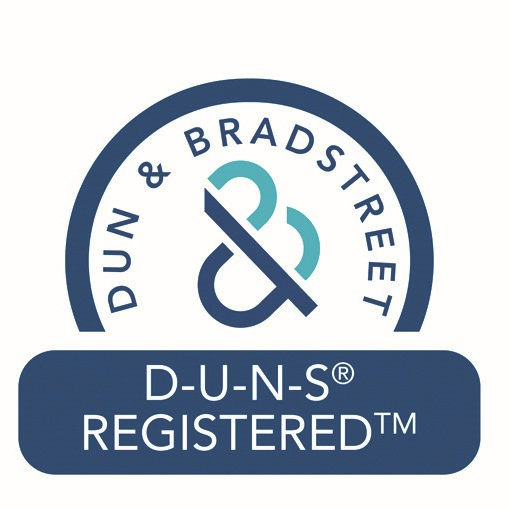Published Date: May 2023
Agro textiles is used to classify woven, non-woven and woven fabrics used in agricultural and horticultural applications including livestock protection, shading, and weed and pest control and growing season extension. Essential properties are strength, elongation, stiffness, porosity and bio-degradability, resistance to sunlight and resistance to toxic environments. Woven monofilament nets (open, woven, mesh for crop protection) provide effective passive protection of seeds, crops and fruits from birds and various insects, open-mesh net fabrics are used to protect fruit plantations. Agricultural textiles are one of the emerging areas as it is used to prevent soil erosion and build roads for forestry and also as coverings for greenhouses, to form crop rows on the ground.
The report “Agro Textile Market, By Type (Weaving and Woven, Nonwoven, Knitting), By Product Type (Shade Nets, Mulch mats, Fishing nets, Anti-hail nets and bird protection nets, and others (Harvesting Nets, Crop Covers, Plant Nets, Root Ball Nets, Pallet Net Covers, Leno Bags, and Windshield Nets)), By Fibers (Polyester, Nylon, Polyethylene, Jute, Polypropylene, Wool, Polyolefin), By Material (Synthetic, Natural ), By Application (Agriculture, Aquaculture, Floriculture & Horticulture, and Others (Animal Husbandry and Agro Engineering Related Application), and By Region (North America, Europe, Asia Pacific, Latin America, and Middle East & Africa) - Trends Analysis and Forecast till 2032 “
Key Highlights:
- In January 2020, Diatex presented in the world’s leading trade fair IPM ESSEN 2020 for horticulture that took place in Germany. The company will present a tailor-made plant protection system and other crop field protection products at the IPM ESSEN 2020.
Analyst View:
The durability of Agro textile products and their sustainability is the major driving factor of the market. Further, growing demand of agriculture industry for organic, dietary and natural foods is also expected to surge the use of textiles for greater crop yielding and good quality food. The innovation in agro-textiles by emerging players in advanced materials, green houses, and crop covers industries also shall augment the industry growth.
However, fluctuating raw materials prices is expected to hinder the market growth.
Browse 60 market data tables* and 35 figures* through 140 slides and in-depth TOC on “Agro Textile Market, By Type (Weaving and Woven, Nonwoven, Knitting), By Product Type (Shade Nets, Mulch mats, Fishing nets, Anti-hail nets and bird protection nets, and others (Harvesting Nets, Crop Covers, Plant Nets, Root Ball Nets, Pallet Net Covers, Leno Bags, and Windshield Nets)), By Fibers (Polyester, Nylon, Polyethylene, Jute, Polypropylene, Wool, Polyolefin), By Material (Synthetic, Natural ), By Application (Agriculture, Aquaculture, Floriculture & Horticulture, and Others (Animal Husbandry and Agro Engineering Related Application), and By Region (North America, Europe, Asia Pacific, Latin America, and Middle East & Africa) - Trends, Analysis and Forecast till 2032”
Key Market Insights from the report:
Agro Textile Market accounted for US$ 11.8 billion in 2022 and is estimated to be US$ 18.9 billion by 2032 and is anticipated to register a CAGR of 6.2%. The Agro Textile Market is segmented based on Type, Product Type, Fibers, material, Application and Region.
- Based on Type, Agro Textile Market is segmented into Weaving and Woven, Nonwoven, Knitting.
- Based on Product Type, Agro Textile Market is segmented into Shade Nets, Mulch mats, Fishing nets, Anti-hail nets and bird protection nets, and others (Harvesting Nets, Crop Covers, Plant Nets, Root Ball Nets, Pallet Net Covers, Leno Bags, and Windshield Nets).
- Based on Fibers, Agro Textile Market is segmented into Polyester, Nylon, Polyethylene, Jute, Polypropylene, Wool, and Polyolefin.
- Based on Material, Agro Textile Market is segmented into Synthetic, Natural.
- Based on Application, Agro Textile Market is segmented into Agriculture, Aquaculture, Floriculture & Horticulture, and Others (Animal Husbandry and Agro Engineering Related Application.
- By Region, the Agro Textile Market is segmented into North America, Europe, Asia Pacific, Latin America, and Middle East & Africa.
Competitive Landscape & their strategies of Agro Textile Market:
The prominent players operating in the Agro Textile Market includes, SRF Limited, Gareware-Wall Ropes Ltd., B&V Agro Irrigation Co, Beaulieu Technical Textiles S.A, Meyabond industry & Trading Co., Ltd., Rishi TechTex Ltd., Belton Industries, Inc., Diatex Co Ltd., Neo Corp International Limited, CTM Agro Textiles Ltd. The market provides detailed information regarding the industrial base, productivity, strengths, manufacturers, and recent trends which will help companies enlarge the businesses and promote financial growth. Furthermore, the report exhibits dynamic factors including segments, sub-segments, regional marketplaces, competition, dominant key players, and market forecasts. In addition, the market includes recent collaborations, mergers, acquisitions, and partnerships along with regulatory frameworks across different regions impacting the market trajectory. Recent technological advances and innovations influencing the global market are included in the report.
About Prophecy Market Insights
Prophecy Market Insights is specialized market research, analytics, marketing/business strategy, and solutions that offers strategic and tactical support to clients for making well-informed business decisions and to identify and achieve high-value opportunities in the target business area. We also help our clients to address business challenges and provide the best possible solutions to overcome them and transform their business.
Some Important Points Answered in this Market Report Are Given Below:
- Explains an overview of the product portfolio, including product development, planning, and positioning
- Explains details about key operational strategies with a focus on R&D strategies, corporate structure, localization strategies, production capabilities, and financial performance of various companies.
- Detailed analysis of the market revenue over the forecasted period.
- Examining various outlooks of the market with the help of Porter’s five forces analysis, PEST & SWOT Analysis.
- Study on the segments that are anticipated to dominate the market.
- Study on the regional analysis that is expected to register the highest growth over the forecast period
To know more
Contact Us:
Sales
Prophecy Market Insights
Email- sales@prophecymarketinsights.com
Website- www.prophecymarketinsights.com
We can customize every report - free of charge - including purchasing stand-alone sections or country-level reports
Custmoized Your ReportWe help clients to procure the report or sections of the report at their budgeted price. Kindly click on the below to avail
Request for Discount



Quick contact
